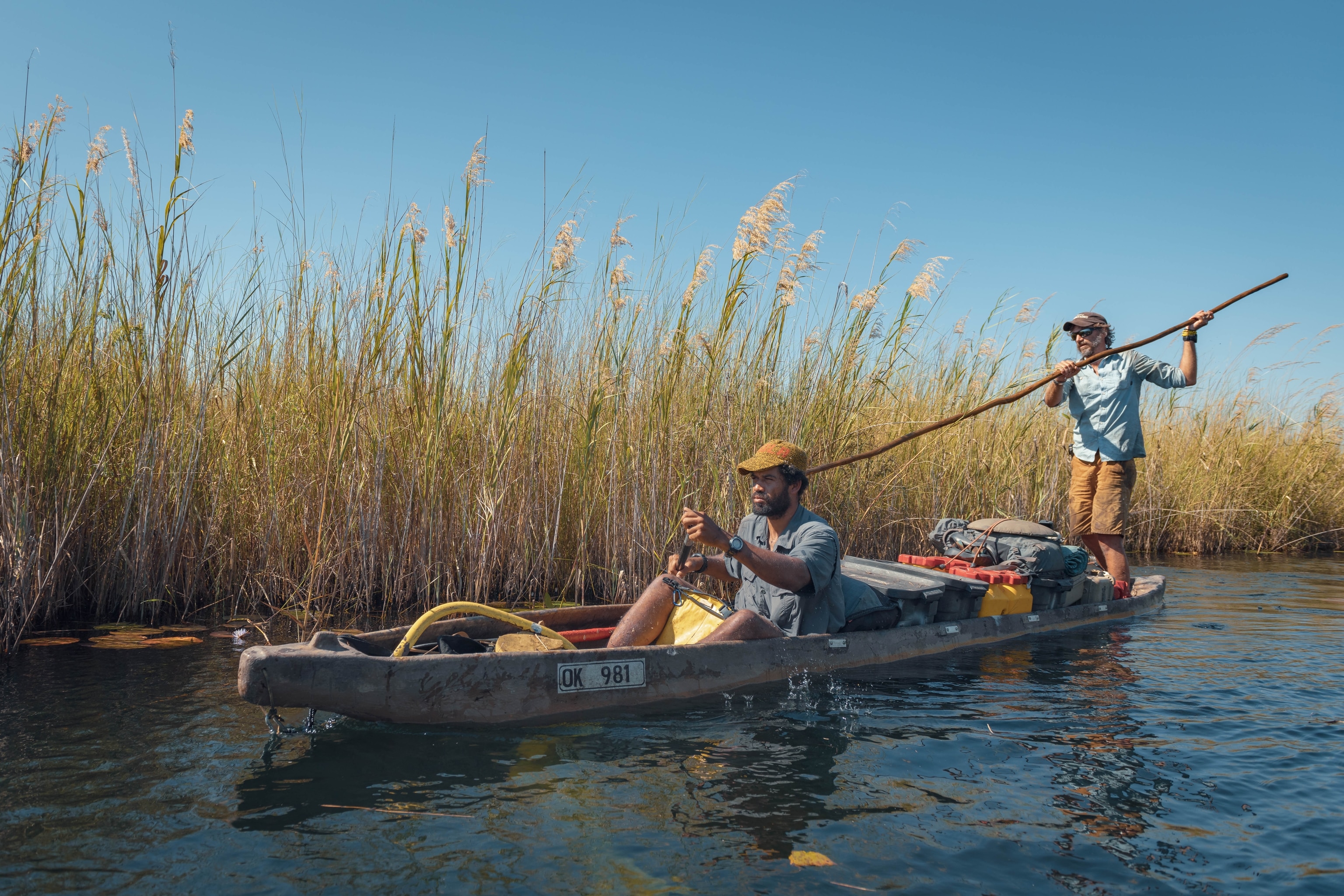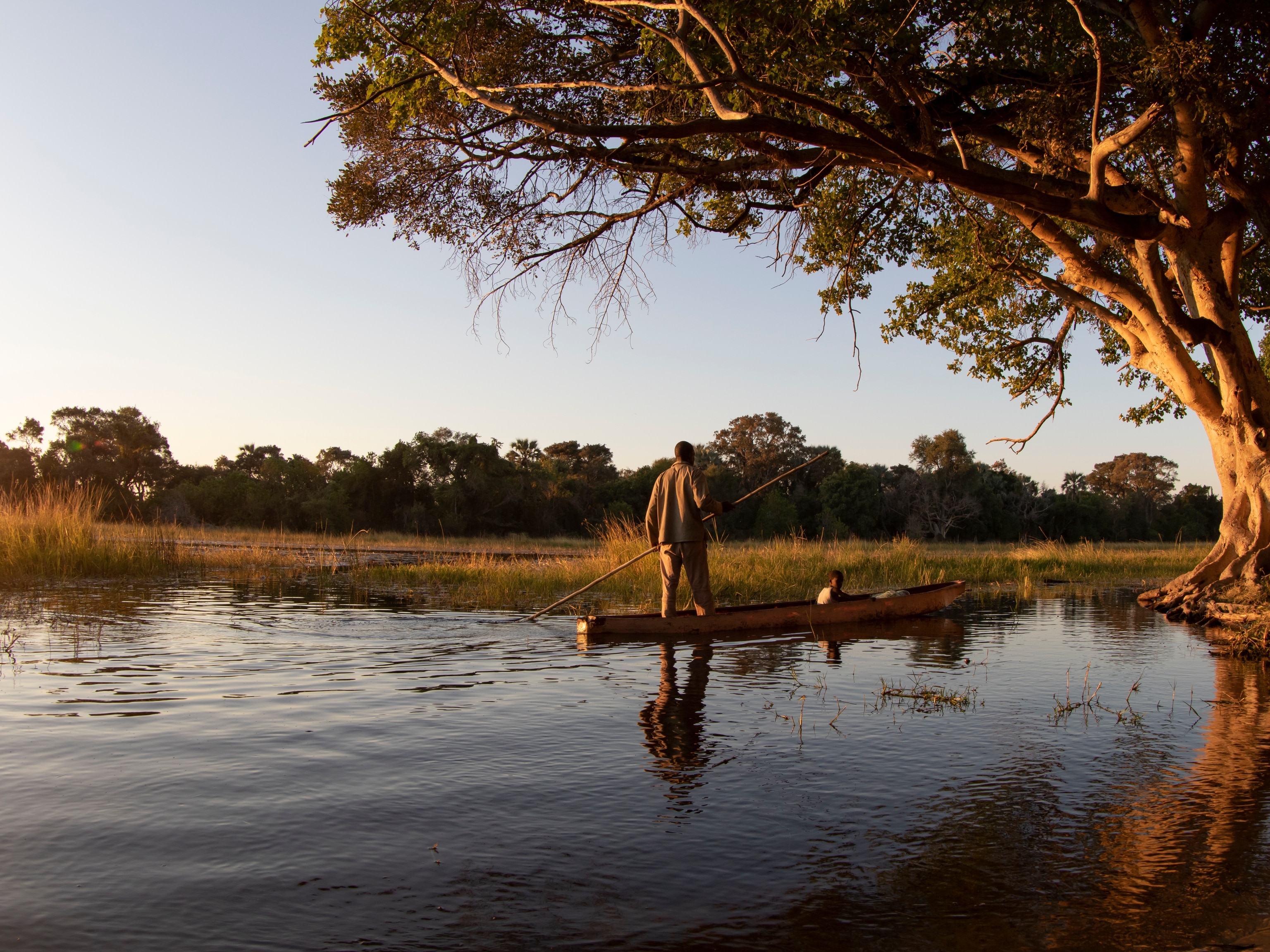Okavango Eternal: Protecting a natural wonder
An ambitious new partnership aims to address one of the most critical conservation challenges in Africa: protecting the near-pristine source waters of the Okavango Delta.
Deep beneath the crust of a far younger Earth, a heady brew of carbon, heat, and unimaginable pressure created one of the hardest natural materials on the planet. Ejected toward the surface by volcanic eruptions, diamonds predate the dinosaurs by at least half a billion years, and will last for billions of years into the future. Not all natural wonders are quite so enduring though. Some need support to be able to last forever.
Building Forever is De Beers’ commitment to ensure that every diamond they discover leaves a lasting positive impact on the people and the place where it’s found. Working with diamonds at their source has instilled such a deep respect for local communities and the planet that De Beers has set a number of Building Forever goals focused on partnering for thriving communities, accelerating equal opportunities, leading ethical practices, and protecting the natural world, including targets to achieve a net positive impact on biodiversity and become carbon neutral by 2030.

Building Forever isn’t a recent commitment for De Beers―it’s a decades-long undertaking to create a strong positive impact tied to each diamond. Natural diamonds are present in about 35 countries, but among the top producers are Botswana and South Africa, two countries in which De Beers has operations. Since the discovery of diamonds in Orapa, Botswana, in the 1960s, the Botswana government’s careful stewardship of income from diamonds has seen the country prosper. Illiteracy and poverty rates fell as Botswana rose from a developing to a middle-income nation in just a few decades. The formation of the Debswana Diamond Company—a 50/50 joint venture between the government of Botswana and De Beers—became one of the strongest examples of public-private partnership in the Southern Hemisphere. In fact, since 2001 the people of Botswana have had a 15 percent ownership in De Beers.
The diamond company continues to partner with others to make a lasting difference. Now, through a new partnership called Okavango Eternal, De Beers has joined National Geographic in its work to help secure protection for the Okavango Delta’s headwaters.
One of the largest, most biodiverse wetlands in the world, the Okavango Delta is fed by water that comes almost entirely from Angola, two countries away. If these waters were to stop flowing, the Delta would simply disappear, taking with it the habitat critical to harboring incredible biodiversity and the vital revenue from Botswana’s tourism sector. While the Okavango Delta thrives under government-enabled conservation, the challenge of ensuring its future lies far beyond the Kalahari Desert. The Delta’s source waters begin in the rainy Angolan highlands, streaming down the Cuito and Cubango Rivers and converging at the southern Angola border to form the Okavango River, which continues flowing through Namibia and into Botswana. But these waters are threatened by climate change, as well as the pressures of development from growing populations.
With local and international support, the National Geographic Okavango Wilderness Project, led by National Geographic Explorer Dr. Steve Boyes, has been surveying the Cuito and the Cubango Rivers since 2015—every last mile, trickle, and stream—studying wildlife and water quality to comprehend just how pure these waters have to remain to nourish the Okavango Delta. The amassed body of data serves as a powerful tool in developing conservation efforts to help preserve these two rivers so they are able to flow freely and cleanly through undamaged land, safe from human-set fires and timber harvest. It is a multiyear, multifaceted, multi-country mission with many challenges, and through Okavango Eternal, De Beers is offering its resources and efforts to help accelerate the program in protecting the natural world and supporting thriving communities.

You might ask how a diamond company could go about helping such an ambitious project to protect the natural world, but the answer is simple: through their experience working in partnership with local people. “The future of conservation in Africa is local,” stresses Boyes, while discussing what it will take to achieve long-term success in preserving both the Okavango Delta and its glittering lifelines. “Those local people need to be the owners of these tourism businesses.” If local livelihoods and businesses can be built upon a foundation of conserving the precious land around them, development can be funded sustainably—no more relying on commodities that neither the Cuito nor the Cubango Rivers can surrender.
It’s important to balance any conservation efforts with socio-economic development and empowerment across the Okavango Basin. “Any conservation initiative to protect landscapes and biodiversity will be useless without a profound intention and strategy to allow for sustainable development of these communities,” says Kerllen Costa, National Geographic Okavango Wilderness Country Director for Angola. “The project will focus on absorbing their intricate connection with these forests and rivers, [and] the already elevated conservation traditions of their natural heritage.” Ancient and respectful, the symbiotic relationships local communities already have with their lands will teach well-intentioned outsiders how they, too, can help protect these communities and landscapes alike.
Having spent half a century working with the people of Botswana, De Beers is experienced in enabling access to business opportunities for a broad range of local community members. For example, its Accelerating Women Owned Micro-Enterprises (AWOME) program runs in partnership with UN Women and local governments across Botswana, Namibia, and South Africa, creating new jobs and a wider range of local businesses. Having proved successful elsewhere, AWOME has rolled out into communities around the Okavango Delta—the learnings from which, alongside other De Beers-supported programs, such as Stanford and Tokafala, could help to guide the partnership’s community livelihood efforts.
Over the next few years, the De Beers and National Geographic partnership intends to continue helping empower communities, as well as establishing cooperatives and conservation operations for people closer to the Okavango Delta and up into Angola. By 2030, the partnership aims to have developed livelihood opportunities for around 10,000 people and help ensure water and food security for over a million people—fortifying both of these outcomes with an increased local resilience to climate-related impacts.

The scientific work that supports these conservation efforts must also continue. The partnership will establish critical infrastructure to expand water monitoring capabilities along the more remote rivers, while also supporting the Okavango Wilderness Project’s annual Delta expeditions to collect further data. A deeper understanding of how these ecosystems interact—the extent of migration routes and territories for animals, for example—will also enable the partnership to help safeguard corridors between countries for wildlife to pass through freely and proliferate, protected by locals who derive a sustainable livelihood from conserving the area.
But people can’t support what they don’t know about. As Boyes explains, “If the science doesn't have a narrative, it’s not accessible to people. It’s not delivered to them, and it has very little impact. I’m talking about the local people on the ground and the whole world that ends up supporting and funding it. Storytelling is absolutely crucial.” That’s why the Okavango Eternal partnership will help to bring both the wonder and the importance of the Delta and its source waters to as wide an audience as it can.
Building Forever is a promise of contributing to a better future for the Earth. In Botswana and beyond, positive change is happening fast. That momentum needs to be sustained, which is why De Beers and National Geographic plan to support the next generation of protectors, developing programs to support local scientists and sponsoring internships and Ph.D.s to ensure future stewardship of the Okavango Basin remains in local hands.
Like the seasonal journey of the Cuito and the Cubango Rivers, the Okavango Eternal partnership has many miles to travel through unknown territory, but together De Beers and National Geographic will help protect one of Africa’s most unique natural wonders.
Find out how De Beers creates positive impacts here.



